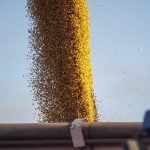The Prairies have millions of acres of acidic soils, which can cause a host of problems, so no producer wants to make it worse.
But many say nitrogen fertilizer does just that, so an expert with Agriculture Canada is trying to find out if that’s true and if so, to put some numbers on the N effect on soil pH.
So far, the only answer she can give is a firm ‘maybe.’
Read Also

RDAR continues to become more relevant and useful to producers five years after its inception
RDAR has already amassed a strong resume five years after its inception.
Using high-powered equipment and carefully preserved soil samples more than a half century old, lead researcher Barbara Cade-Menun set out to learn how fertilizing with nitrogen and phosphorus changes the chemistry of soils and the availability of phosphorus to crops.
She found that long-term nitrogen fertilizer use changed the ways phosphorus cycles within the soil, in the process reducing soil pH and causing soils to become more acidic.
Nutrient cycling occurs when nutrients are taken up by plants and returned to the soil, where they are broken down again during decomposition. The pH scale goes from 0 to 14, with seven as neutral and anything below that acidic.
Added phosphorus fertilizer bound more tightly to elements in the soil, making it less available to crops.
“If you put the (P) fertilizer in it’s going to bind with something,” said Cade-Menun. “If it starts to bind to iron or aluminum, then the plants need different mechanisms to get the phosphorus back for their use and often they are harder to get back.”
In a nutshell, N fertilizer changes the soil microbial community and how P reacts, she said.
“Understanding how phosphorus reacts with those changes can give us better ways to provide producers with information on whether they should stick with the standard fertilizers they’ve been using. Perhaps (researchers) will need to look at a different kind of P fertilizer that isn’t affected by changes in pH.”
But until then, what are producers with low pH, highly acidic soils supposed to do?
One option is liming. Fields most likely to benefit from lime have a pH below six. Although it can take literally tonnes of lime to move a soil pH from a 5 in a field to a neutral rating of 7, experts say improved fertilizer availability for all crops, better nodulation for pulse crops and alfalfa, and reduced severity of clubroot infestations in canola can make the investment worthwhile.
The researchers examined soil samples from plots started in 1967 at Agriculture Canada’s research station at Swift Current, Sask. These plots, which follow a fallow-wheat-fallow rotation, had received a fixed amount of P since that year — some of it with N fertilizer, some without. They also looked at sub-plots where P fertilization was discontinued in 1995 but continued to be treated with and without N fertilizer.
These samples were examined at the molecular level using advanced techniques including the Canadian Light Source synchrotron at the University of Saskatchewan, which is said to produce light millions of times brighter than the sun.
This football-field sized machine (which cost $174 million when it was built a decade ago and is one of only a few dozen of its kind in the world) allowed researchers to gather information on how fertilizing with nitrogen and phosphorus changes the chemistry of soils and the availability of phosphorus to crops.
Another technique involved the nuclear magnetic resonance (NMR) spectroscopy laboratory, also located at the U of S. This machine works on the same principles as magnetic resonance imagery in a medical setting, except it’s designed to analyze chemicals, said Cade-Menun.
“By studying the cycle, researchers get a complete picture of how phosphorous moves and thus get a better understanding of how to manage it more effectively.”
That’s important from both an agronomic and environmental perspective.
If producers don’t use enough P fertilizer, they risk lower yields. If they use too much, the excess can lead to algae blooms in nearby dugouts, ponds and lakes. Through this ongoing research, Cade-Menun hopes to find the “sweet spot” for P fertilizer application.
“I don’t think anybody would argue with wanting to grow crops that are healthy and to optimize our production, because the consumer benefits,” she said.
“But we want to do that in the most cost-efficient and environmentally sustainable way, and that means balancing what the crop needs with making sure it has just enough, but not too much, fertilizer.”
The group’s results indicate the need to dig deeper to fully understand the roles that pH and organic matter play in how phosphorus cycles in soil, said Cade-Menun. Future plans include studying other crop rotations (such as lentil-wheat) with different fertilizer rates.
They also plan to set up long-term nitrogen and phosphorus fertilizer experiments in other provinces, including Manitoba and Quebec.
















